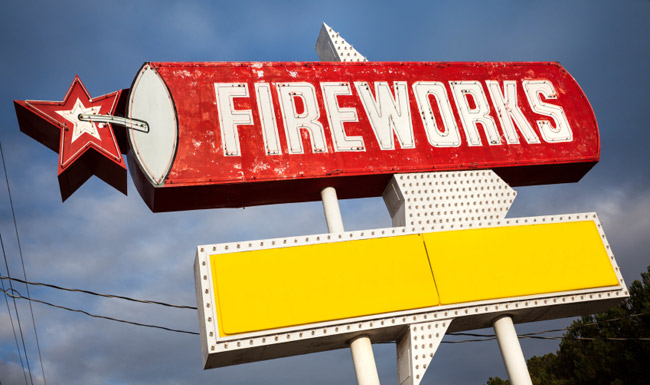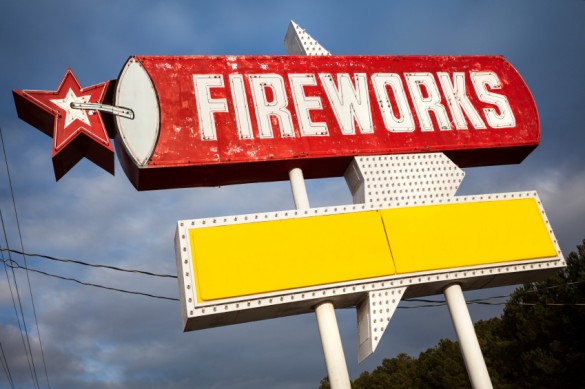 Vanderbilt specialists are urging parents and children to leave the fireworks displays to the experts this Fourth of July.
Vanderbilt specialists are urging parents and children to leave the fireworks displays to the experts this Fourth of July.
Children are often seen at the Monroe Carell Jr. Children’s Hospital at Vanderbilt for a variety of injuries, including serious damage to eyes from bottle rockets, third-degree burns related to the use of sparklers, and trauma, often of the hands, from explosive fireworks.
“People may not know, for example, that the tip of a sparkler burns at a temperature of about 2,000 degrees Fahrenheit,” said Purnima Unni, Pediatric Trauma Injury Prevention Coordinator at the Children’s Hospital. “This is hot enough to cause third-degree burns.”
Hearing loss is also a concern for children and adults, with sound levels from fireworks in the range of 125 decibels.
“There are two types of hearing loss that can occur, one is transient and the other is permanent. When you are exposed to loud sounds above 85 decibels there’s a chance of having permanent hearing loss. Fireworks are in the range of 125 decibels,” said Alejandro Rivas, M.D., assistant professor of Otolaryngology.
Rivas said a show of fireworks can be safely observed as long as it is directed by professionals and spectators wear proper ear protection, noting that any type of earplug should be appropriate.
The three types of fireworks that keep hospital emergency rooms busy during this holiday period are bottle rockets, firecrackers and sparklers.
Last year, the Consumer Product Safety Commission (CPSC) received reports of six men who were killed by professional-grade, homemade or banned firework devices. In addition, an estimated 8,700 consumers were treated in U.S. hospital emergency departments for fireworks-related injuries.
Last year, between June 22 and July 22, more than 5,000 consumers were treated in hospital emergency rooms due to fireworks-related injuries. Follow-up investigations of incidents showed that most injuries were associated with malfunctioning fireworks or improper use.
Malfunctioning fireworks often result in unexpected flight paths and dangerous debris. Improper use includes igniting fireworks too close to someone, lighting fireworks in one’s hand and playing with lit or used fireworks.
Sixty percent of all fireworks injuries occur during the 30 days surrounding the July 4 holiday. More than half of these reported injuries involve burns to the hands, head and face. About 1,000 reported injuries involve sparklers.
“Fireworks are explosives and need to be treated as such,” said Corey Slovis, M.D., professor and chair of the Department of Emergency Medicine. “If you do not want your child around explosives, then keep them safely distant from fireworks.”
Firework Safety 101:
- Always read and follow all warnings and label instructions.
- Always have an adult present, and never allow children to play with or ignite fireworks. Sparklers are often considered to be the ideal “safe” firework for the young, but they burn at very high temperatures and can easily ignite clothing.
- The adult igniting the fireworks should always wear eye protection and never have any part of the body over the fireworks.
- Use fireworks only outdoors.
- Be sure other people are out of range before lighting fireworks.
- Always have water handy (a garden hose and a bucket).
- Only light fireworks on a smooth, flat surface away from the house, dry leaves, and flammable materials.
- Light only one firework at a time.
- Never throw or point fireworks at other people or animals.
- Never shoot fireworks in metal or glass containers.
- Never re-light a “dud” firework. Douse and soak them with water and throw them away.
- Dispose of fireworks properly by soaking them in water and then disposing of them in your trashcan.
- Remember, the safest way to prevent fireworks-related injuries and deaths is to leave the fireworks displays to trained professionals.
Source: 2011 Fireworks Annual Report, U.S. Consumer Product Safety Commission















